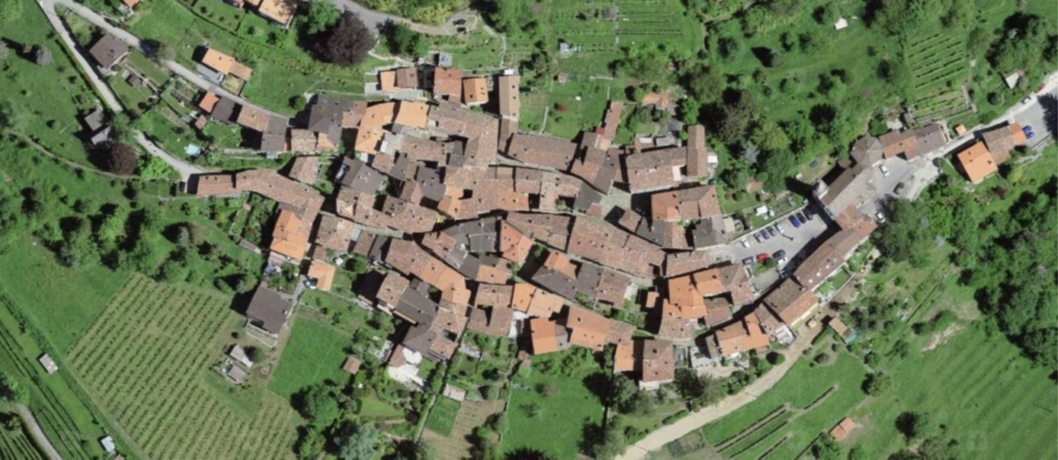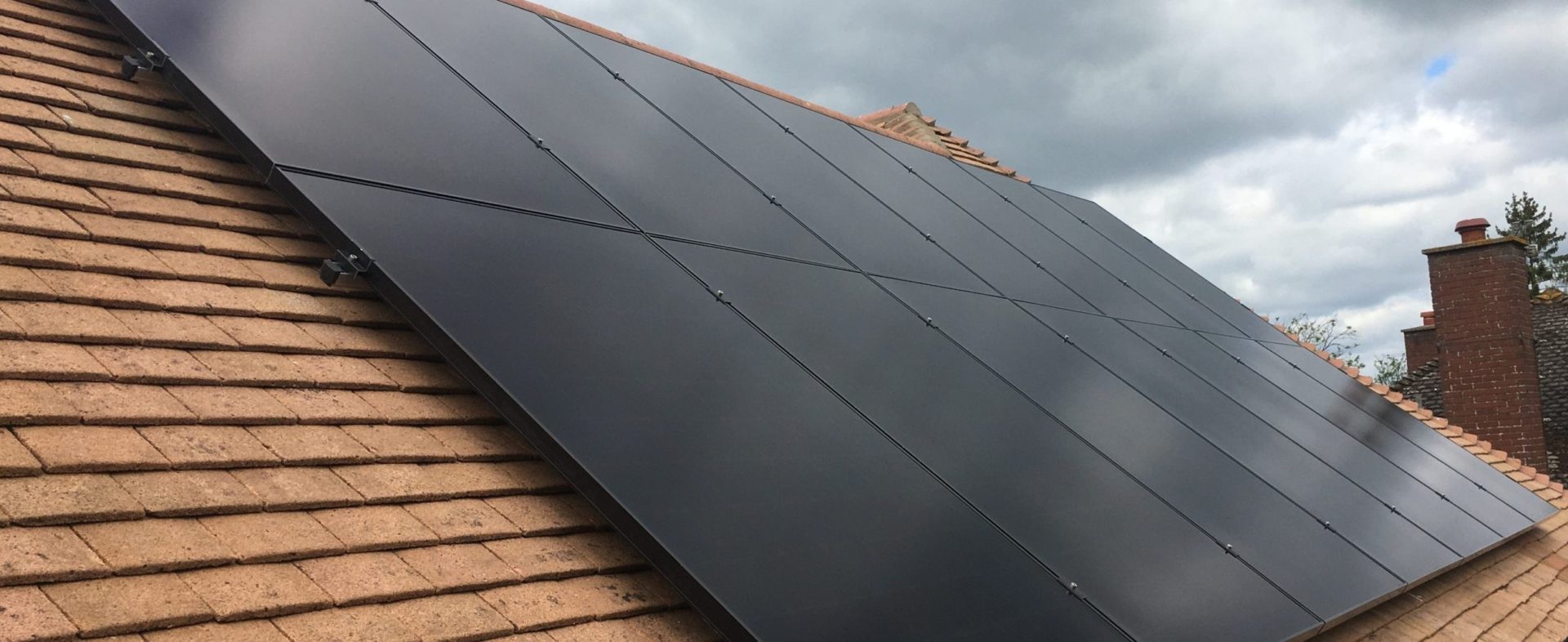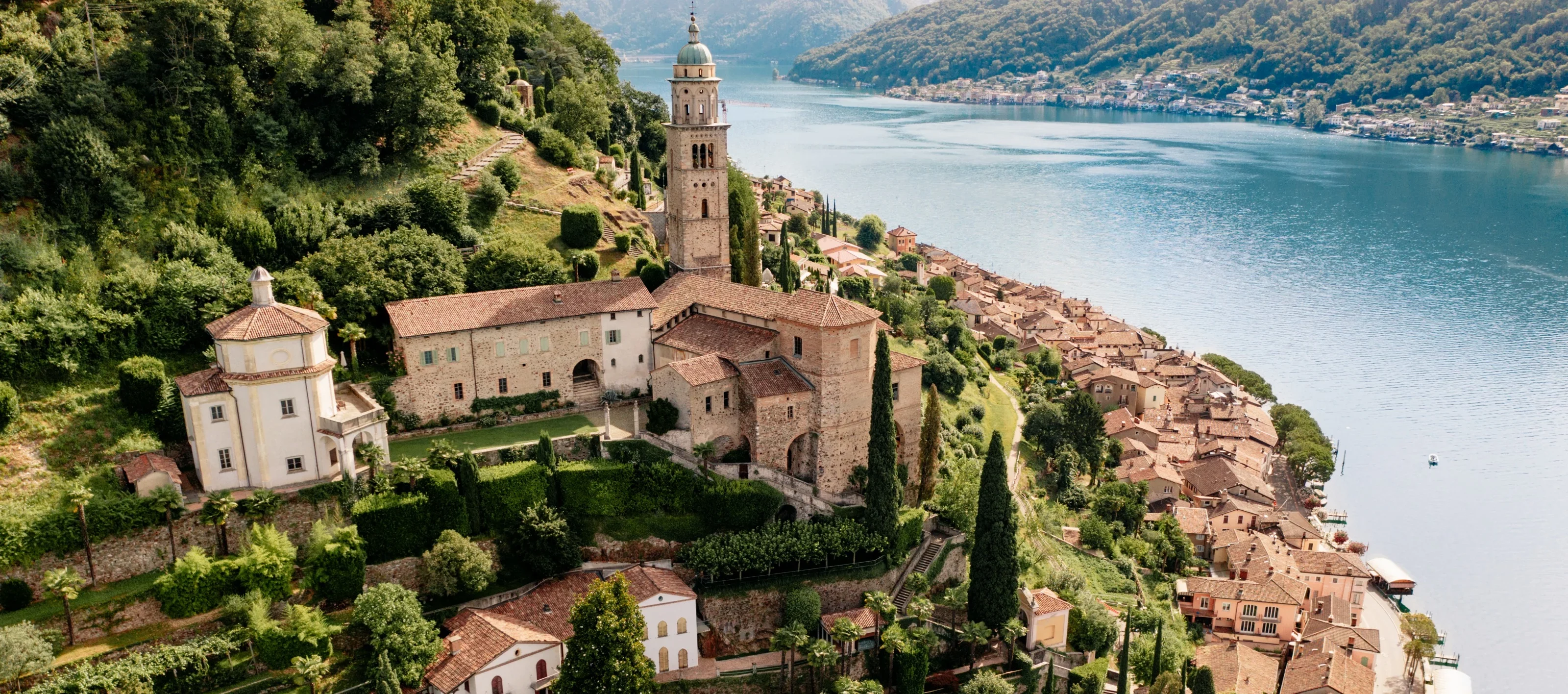1st June 2023

Aerial photograph of Bedigliora (TI-CH), a site of national importance included in the Federal Inventory of Heritage Sites of National Importance (ISOS). Source: Studio Habitat SA.
Authors: P. Bonomo, I. Zanetti (ISAAC-SUPSI)
On the 10th of May, a course was held for municipalities, planners and professionals on the subject of the integration of solar installations within regulatory plans.
This course was jointly organised by Swissolar – the Swiss Solar Energy Professionals Association and SUPSI’s DACD – the Department of Environment, Construction and Design, with the support of EnergySchweiz and the TicinoEnergia Association.
In Switzerland, photovoltaics is growing exponentially. At the end of 2022 it covered almost 8% of electricity consumption, and forecasts indicate that it will play an even more important role in the coming decades (currently it generates about 1.2TWh/year of photovoltaic electricity, in 2050 it is expected to produce 33.6TWh/year), with a view to a more secure and sustainable energy supply, as well as being more climate-friendly.
For many reasons, the potential of solar energy available from roofs and facades of existing buildings, which the confederation estimates at 67tWh per year, must be exploited in the first place. It is therefore important that this planned further expansion does not conflict with spatial planning and is carried out with regard to the quality of settlements. It is therefore essential to establish a constructive dialogue between those involved in spatial planning and building design and those who are active in the conception and implementation of solar installations.
Swiss regulations, in particular the LPT (Federal Act on Spatial Planning) and OPT (Ordinance on Spatial Planning) regulate which solar installations may be installed without the need for a building permit. For “sufficiently adapted” systems, only a notification procedure is required for most buildings, provided that the requirements of Art. 32a para. 1 and 1bis of the OPT are met.
For all other cases or if, for example, solar installations are to be built on cultural or natural monuments of cantonal or national importance or in areas declared worthy of protection, a building permit is required. In this context, solar installations must not substantially affect such monuments.
In all cases, the interests related to the use of solar energy in existing or new buildings prevails in principle over aesthetic aspects, i.e. regulations concerning external appearance must not prevent or restrict such exploitation.
Evolution of technology
Over the past 40 years, the efficiency of photovoltaic modules has improved significantly due to technological developments and the accumulated experience of the photovoltaic industry. There has been a rise from modules with an efficiency of less than 9 percent (early 1980s) to products with an efficiency of more than 22 percent (2023).
This is because photovoltaic cells have undergone many technological innovations. In addition, the optimisation of production processes has helped to reduce costs and improve the efficiency of photovoltaic modules. Automation and the introduction of new manufacturing technologies have enabled more efficient and accurate large-scale production. Moreover, improvements in silicon deposition processes, the use of advanced chemical and physical deposition techniques, and the optimisation of joints between materials have been crucial in increasing overall efficiency.

SunPower Maxeon modules are among the most efficient products on the market today.
Colour
The colour of the photovoltaic cells gives a fundamental flexibility to their integration while nevertheless affecting the efficiency of the photovoltaic module. Compared to a conventional module, there can be a reduction in efficiency from 5% to 30% depending on the chosen colour and treatment techniques. It should be considered, however, that by being able to exploit larger surfaces and different orientations, self-consumption can be optimised compared to conventional solutions, thus also increasing both the energy and economic value.
The data presented in the following table refers to the results obtained by the ENHANCE project. This project, financed by the Swiss Federal Office of Energy, focuses on exploring new test procedures and their measurement uncertainty, as well as implementing new equipment or adapting existing test infrastructures to new module solutions with higher energy yields or a more significant aesthetic value. Compared to the values reported in the previous paragraph, those measured during the project are higher, but these are indeed special products. For more mainstream coloured products, a reduction from 5% to 30% is appropriate.

Loss percentage compared to a standard module. Source: ENHANCE project.
The importance of communication
Communication between the various stakeholders is key in combining the legal framework and design requirements, harmonizing energy and aesthetic aspects, and making technology compatible with preservation interests. While in built and agricultural areas, with no particular criteria of protection and preservation of buildings and/or landscape, the procedures are simplified and customary, solar installations that are located in areas subject to preservation as part of cultural or natural monuments of cantonal or national importance, are subject to mandatory authorization. Notwithstanding the general conservative approach, in the case of suitable technical, material and chromatic solutions, which today allow solar technologies to be customized and therefore not to impact the landscape of roofs and their surroundings, a respectful integration in the traditional building substance is possible.
In Ticino, according to statistics on data collected over the five-year period 2017-2022, only 5% of solar installation projects are given a negative notice, of which:
- 2.7% concern building zones: roofs of nationally protected areas, buildings with federally subsidised stone roofs, installation on facades, on the ground or on walls;
- 2.3% concern interventions outside building zones: installation on the ground or on landscape-relevant retaining walls.
Indeed, Article 102 of the Spatial Development Act states that ‘The cantonal landscape must be respected, protected and valorized, guaranteeing in particular its variety, quality and character’. These characteristics often lend themselves to different interpretations and it is therefore important to avoid any arbitrariness in order to apply these principles in a proportionate manner based on objective criteria. The context becomes the benchmark, the same intervention depending on the context can have a greater or lesser impact, more demands are made where the qualitative value is greater.
Solar installations in protected areas
Historic settlements, which account for 2 percent of the built-up area in the canton of Ticino, are sites where the protection of identity and traditional heritage values is generally considered paramount.
The surface area, form, linguistic and material consistency and details of a solar installation built in these contexts must in general be carefully planned so as to ensure that the historical values still present are not compromised by the presence of devices solely intended for energy generation and not designed for architectural integration, as is the case with traditional solar installations.
In the light of the legal framework and the relevant rulings, greater attention must be paid to federally protected sites or perimeters (ISOS inventory): the quality of the settlement, the visibility of the roofs as a whole and, not least, the sum of the impact of individual interventions must be assessed.
In terms of planning, the Office for Nature and Landscape supports the local communities in their choices as a matter of principle and calls for the updating of planning regulations that are outdated or do not comply with the federal legal framework. It also considers it advisable to define a regulatory framework that takes account of technological developments (by including appropriate exemption regimes from the restrictions in justified cases).
Referring back to the LPT, the canton may require installation restrictions that may go as far as a total ban for sites with a high monumental value and where the design of the roofs within the landscape defines an element of great scenic value that must be protected.
Where there is a compulsory requirement for stone roofs which the canton subsidizes, the installation of solar roof systems is in principle excluded. In such cases, the municipality is invited to examine the advisability of alternative solutions of collective nature (e.g. district heating) to support the inhabitants within this area.

Morcote (TI), site of national importance. The Federal Inventory of Heritage Sites of National Importance (ISOS) lists and documents the most valuable settlements in Switzerland. Photo: © Switzerland Tourism / Doyenne+david&kathrin.
Installation criteria in historical areas
Since 2008, the installation of solar panels has been regulated by federal law, with the aim of promoting their use as a renewable energy source. Art. 18a of the Federal Act on Spatial Planning (LPT), which came into force in its current form on 1 May 2014, stipulates that in building and agricultural zones solar installations sufficiently adapted to roofs do not require any authorization. However, a permit becomes indispensable when installations affect historical areas, cultural or natural monuments of cantonal or federal importance.
Where there are no prominent historical values and there are no prohibitions at planning level, the installation is permitted. However, the situation of the building within the overall landscape of the core area and the visibility of the roof itself must be carefully evaluated. The surface area and shape of the installation must be taken into due consideration; in principle, the original roof and the traditional appearance must remain perceivable.
The Canton, through the Spatial Development Section, has published guidelines that codify and make the authority’s assessment criteria more transparent, thus becoming a useful planning tool.
These assessment criteria are constantly evolving, both because of people’s changing sensitivities, political objectives related to climate sustainability, and the evolution of technologies, which make integration increasingly possible.
Surface
- the installation should preferably be planned in a regular rectangular shape;
- several surfaces are not excluded, but the installation should be fitted in an orderly manner in respect of the overall roof design;
- the total dimensions of the installation in relation to that of the roof should be considered in the light of the historical and landscape value of the core site and the overall roof design.
Installation methods
- integrated or added;
- it is advisable to retain at least two rows of tiles on all sides, towards the eaves, corner or ridge, so that part of the traditional roof remains visible and connects perceptively with the rest of the roofs in the area;
- the connections should be hidden under the roofing.
Colour and finish
- any frames should be proposed in the same colour as the panels;
- the finish of the panel should be uniform and opaque (no cells or textural lines);
- the degree of reflection should be as low as possible;
- the closer the colour of the panel is to that of the cladding, the better the integration.

In this pilot project, concerning a 1859 rural house, coloured (terracotta) photovoltaic modules developed by the CSEM of Neuchâtel are used specifically for sites protected at the level of cultural heritage. Photo: Solstis.
Conclusions
The possibility of installing a solar installation on a building listed for landscape or historical reasons must be carefully weighed up with a careful design that takes into account the compatibility criteria and the specific characteristics of the site, its values and current regulations.
In these cases, rather than a conventional installation, it is often a matter of reasoning on a component and system level according to a more meticulous design logic, assessing the necessary authorizations and approvals from the relevant authorities, and also entering into a fair and constructive dialogue between the parties. It may be required to submit a formal application and provide detailed information on the project, including the technical specifications of the product to be used, construction details and the impact of the installation on the building (e.g. through renderings or photomontages). This information makes it possible to objectively assess the characteristics of a solar installation in relation to the characteristics of the landscape at different scales by analysis documents and examination procedures that objectivise the judgement, in particular through group assessments and not by individuals (commissions), the use of official guidelines and federal (ISOS, IFP, IVP) and cantonal (cultural heritage) inventories.
A constructive dialogue between the various stakeholders is essential and provides a common foundation for objectively establishing a shared approach in which all players (approval and implementation authorities, the general public, planners and architects) are involved in defining the ground rules for the consistent implementation of landscape protection and for the best possible integration of these solutions in specific contexts.





